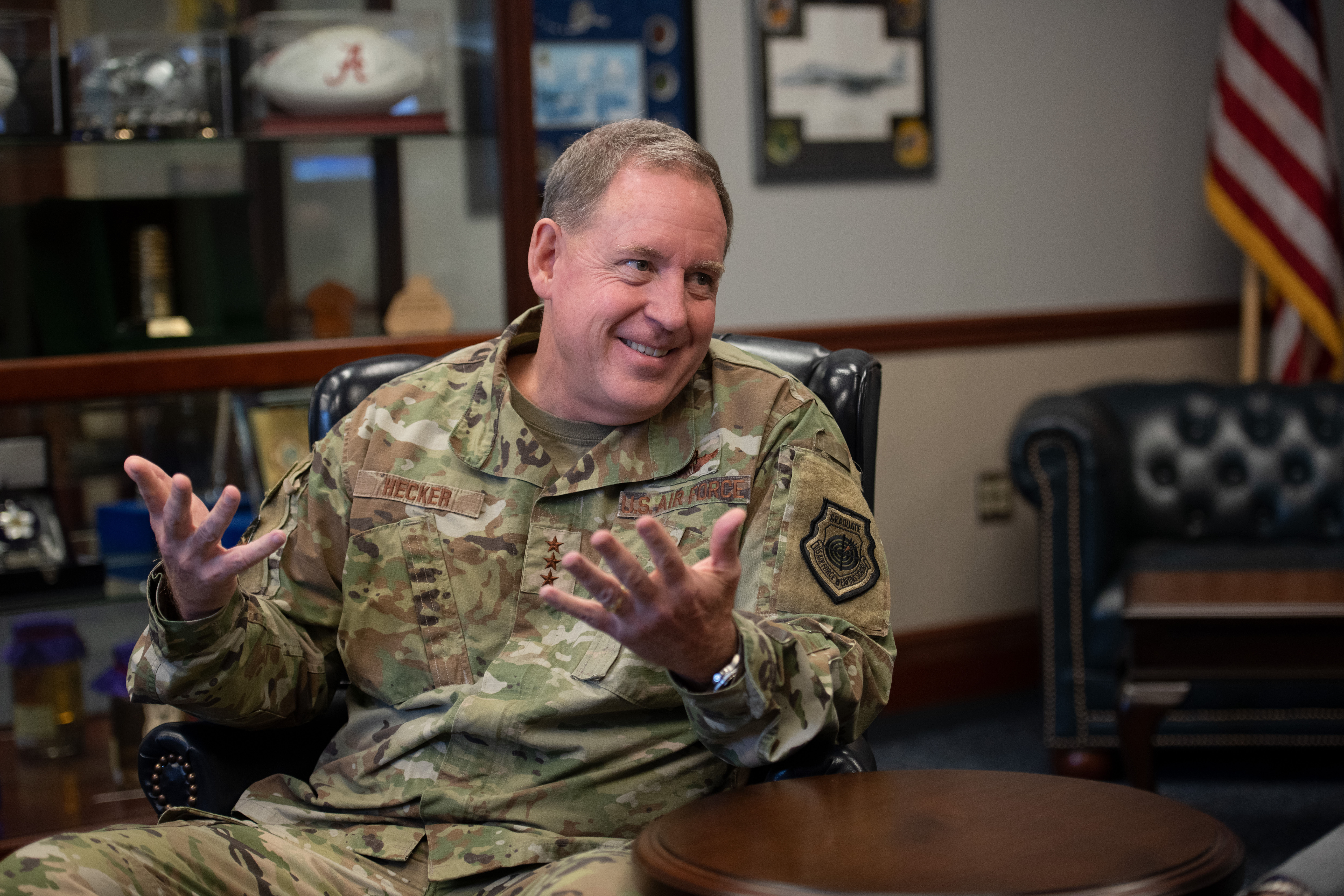FAIRFORD, U.K.—Two weeks into his job as the commander of U.S. Air Forces in Europe-Air Forces Africa and NATO Allied Air Command, Gen. James B. Hecker has gotten a running start on one of his top priorities—building partnerships.
On the sidelines of the Royal International Air Tattoo from July 15 to 17, Hecker met with air chiefs from dozens of other countries to introduce himself and start building relationships.
“We had, I think it was 67 air chiefs here from all different countries that were here over the last three days,” Hecker told Air Force Magazine in an exclusive interview at RIAT. “And I have had several meetings … with air chiefs from other countries, particularly from the NATO countries, and got to know them—which would have taken me six to seven months to do that just flying around to different countries—so this has really helped me.”
One of the major topics of those discussions, Hecker said, was Russia’s invasion of Ukraine and fears of further aggression. The developments of the past several months have created an “urgency,” he said, especially among countries bordering Russia.
Like Air Force Secretary Frank Kendall, Hecker has emphasized his experience of intensely focusing on Russia during the Cold War as something the Air Force—USAFE in particular—will have to get back to. In doing so, he said at RIAT, he hopes to show Russia that further aggression is “not worth it.”
“We want to make sure that we have a good deterrent, but we want to make sure that we deter in a way that is not provocative in nature, that will make this escalate, if you will,” Hecker said.
Part of the U.S. and NATO response to Russia’s war with Ukraine has been to increase NATo’s air policing along its eastern flank, and that’s resulted in substantially increased instances of fighters scrambling to meet Russian aircraft near NATO borders.
But as the war has dragged on for several months, longer than many expected, USAFE and NATO Allied Air Command have adjusted, Hecker said.
“When the invasion first occurred, we had three different [combat air patrols, or CAPS] that we manned 24/7. And that lasted the first couple days until we kind of got a sense for what was going on,” Hecker said. “And then we reduced that down a little bit, but still well above the air policing levels. A lot of times we were just sitting alert. Now we’re actually doing active … CAPs, fully armed with the two-ship fighters from all kinds of different nations.”
Over the past three or four months, Hecker added, NATO has reached a “steady state” in terms of numbers of patrols and hours. Now, as the war continues and the AAC looks to transition once more to an alert but sustainable long-term posture, Hecker said he wants to use a new approach to supplement the enhanced air policing mission.
“We’re trying to get different countries to interact with one another, and we call it Enhanced Vigilance Activities,” Hecker said. “And so we’ll get some aircraft from Poland and Hungary, and they will meet in a certain area, and instead of just doing the combat air patrol with live weapons on, they’ll go out and basically just do training, and exercise and fight against one another and work with one another,” Hecker said.
“So if we do have to do something, we’re interoperable—we’ve worked together in the past. So we’re increasing the number of those kinds of things that we’re doing, which is helping out a lot.”
